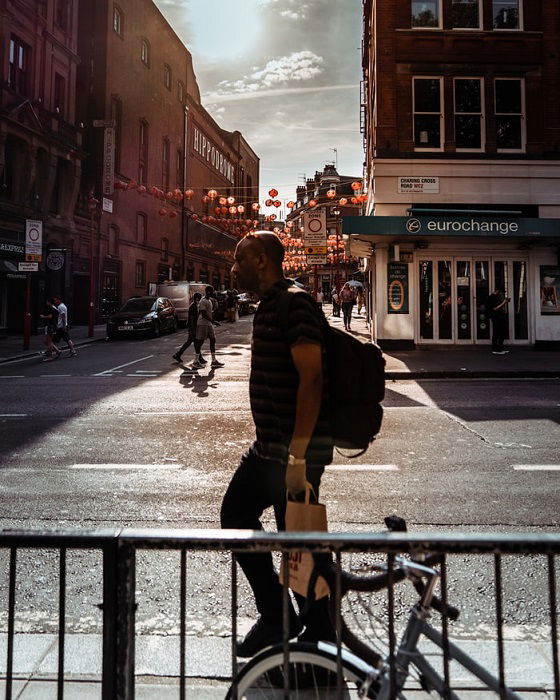Some Known Questions About Framing Streets.
Wiki Article
Not known Facts About Framing Streets
Table of ContentsThe Single Strategy To Use For Framing StreetsLittle Known Questions About Framing Streets.The 3-Minute Rule for Framing StreetsThe smart Trick of Framing Streets That Nobody is Discussing

Both at the Museum of Modern Art (Mo, MA). Motivated by Frank, in the 1960s Garry Winogrand, Lee Friedlander and Joel Meyerowitz began photographing on the streets of New york city. Phil Coomes, writing for BBC News in 2013, claimed "For those of us interested in road photography there are a couple of names that attract attention and one of those is Garry Winogrand"; movie critic Sean O'Hagan, composing in in 2014, said "In the 1960s and 70s, he defined road digital photography as a perspective in addition to a style and it has laboured in his darkness since, so conclusive are his photos of New york city." Going back to the UK in 1965 from the US where he had met Winogrand and adopted road digital photography, Tony Ray-Jones transformed a wry eye on commonly surreal groups of British people on their holidays or participating in celebrations.
Road photography is a large genre that can be specified in numerous methods, but it is usually identified by the spontaneous catching of an unrepeatable, short lived minute, usually of the day-to-day going-ons of complete strangers. It is typically fired with bigger angle lenses (e. g. 35mm) and typically features metropolitan atmospheres.
Top Guidelines Of Framing Streets
Docudrama professional photographers usually have actually a defined, conscious message and an objective to tape-record certain occasions in history (https://www.gaiaonline.com/profiles/framingstreets1/46535055/). The gamut of the docudrama strategy includes elements of journalism, official site art, education and learning, sociology and history. In social investigation, documentary images are usually intended to prompt, or to highlight the demand for, social modificationStreet digital photography is generally seen as unposed and honest, however there are a few street professional photographers who interact with strangers on the streets and take their pictures. Road pictures are unplanned portraits taken of strangers while out doing road photography, nonetheless they are seen as postured because there is communication with the topic.
e. 'candid digital photography' by interpretation) for fine art functions has been questionable. Photographing people and locations in public is lawful in a lot of countries safeguarding freedom of expression and journalistic freedom. There are normally restrictions on exactly how images of individuals may be utilized and most countries have certain regulations concerning people's personal privacy.
The 4-Minute Rule for Framing Streets
While the common-law provinces adhere to the UK, relative to the flexibility to take pictures in a public place, Quebec regulation supplies that, in a lot of circumstances, their publication can occur only with the authorization of the topics therein. The European Union's Human being Legal right Act 1998, which all EU countries need to promote in their residential legislation, develops in a right to personal privacy. Of liberty of expression. While additionally limiting digital photography in order to secure privacy civil liberties, road photography can still be legal in France when sought as an art kind under particular situations.
. who simply strayed right into a scene), or who are not even identifiable in the image. https://www.goodreads.com/user/show/174116073-david-turley. It likewise does not normally include individuals that are somebodies (e. g - Street photography hashtags. political leaders or celebrities). If a picture is taken into consideration art, the courts will also take into consideration the professional photographer's flexibility of creative expression; meaning that "artful" street digital photography can still be lawfully released in particular situations
The smart Trick of Framing Streets That Nobody is Discussing
Photographing the authorities and publishing the photographs is likewise lawful.In Hungary, from 15 March 2014 anybody taking photographs is technically breaking the law if somebody wanders right into shot, under a brand-new civil code that bans taking photos without the approval of every person in the photo - Street photography hashtags. This broadens the regulation on grant include the taking of pictures, in addition to their publication
'Surprise digital photography' (kakushidori hidden, surreptitious digital photography) 'taken digital photography' (nusumitori without intent of obtaining consent) and "quick photography' (hayayori before authorization and rejection can be provided) are prohibited unless in the former approval is obtained from the subject right away after taking the photo. Individuals have legal rights to their images (shzken, droit de image).
Report this wiki page